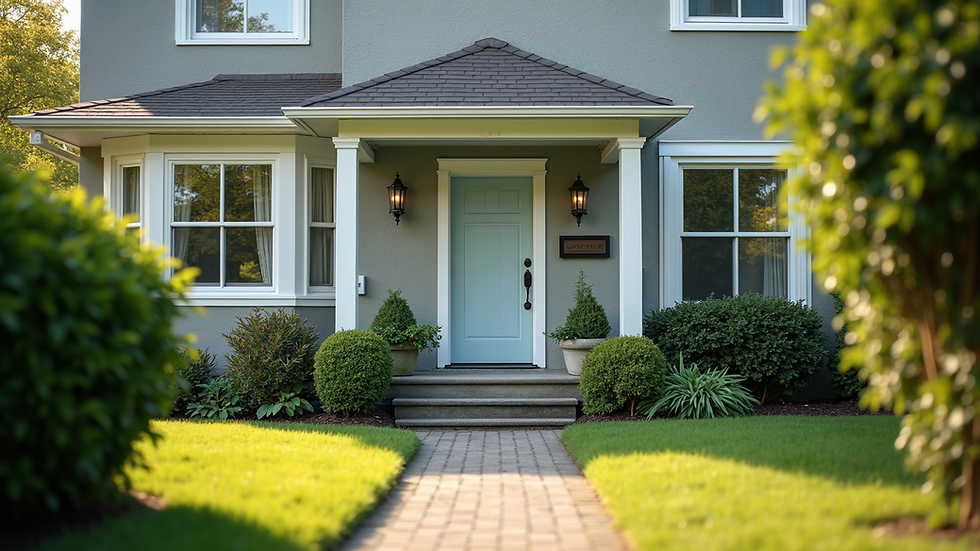Benefits of Proactive Property Management
- lwandersee74
- 16 hours ago
- 3 min read
When it comes to managing properties, taking a proactive approach can make all the difference. We understand how important it is to maintain a safe, comfortable, and well-maintained living environment. By adopting proactive management strategies, we can prevent issues before they arise, save money, and enhance the overall value of the property. This approach is especially vital for homeowners and HOA board members in Minnesota, where seasonal changes and local regulations require careful attention.
Why Proactive Management Strategies Matter
Proactive management strategies focus on anticipating potential problems and addressing them early. Instead of waiting for repairs or conflicts to escalate, we stay ahead by scheduling regular maintenance, conducting thorough inspections, and communicating clearly with residents. This mindset helps us avoid costly emergencies and keeps the community running smoothly.
For example, in Minnesota, harsh winters can cause damage to roofs, pipes, and landscaping. By scheduling inspections before the cold season, we can identify weak spots and fix them promptly. This not only protects the property but also ensures residents enjoy a safe and comfortable home year-round.
Some key benefits of proactive management strategies include:
Reduced repair costs through early detection
Improved resident satisfaction with timely communication and maintenance
Enhanced property value by preserving the condition of buildings and grounds
Stronger community relationships by addressing concerns before they escalate

Benefits of Implementing Proactive Management Strategies in Your Community
To successfully implement proactive management strategies, we recommend a structured plan that includes the following steps:
Regular Inspections
Schedule routine inspections of all property areas, including common spaces, roofs, plumbing, and landscaping. Use checklists to ensure nothing is overlooked.
Preventive Maintenance
Develop a calendar for preventive maintenance tasks such as HVAC servicing, gutter cleaning, and pest control. This helps avoid unexpected breakdowns.
Clear Communication Channels
Establish easy ways for residents to report issues and receive updates. This could be through an online portal, email newsletters, or community meetings.
Budgeting for Long-Term Needs
Allocate funds for future repairs and upgrades. Planning ahead prevents financial strain and allows for timely improvements.
Training and Support for Staff
Equip property managers and maintenance teams with the knowledge and tools they need to act quickly and efficiently.
By following these steps, communities can enjoy smoother operations and fewer disruptions. For instance, a well-planned snow removal schedule in Minnesota can prevent accidents and property damage during winter months.

How Proactive Property Management Enhances Community Well-being
When we embrace proactive property management, we create a positive environment where residents feel valued and secure. This approach fosters trust between homeowners, board members, and management teams. It also encourages residents to take pride in their community, leading to better care of shared spaces.
Here are some ways proactive management enhances community well-being:
Faster Response Times
Issues are addressed before they become emergencies, reducing stress for everyone involved.
Consistent Upkeep
Regular maintenance keeps the neighborhood attractive and functional, which can boost property values.
Conflict Prevention
Clear rules and open communication help prevent misunderstandings and disputes among residents.
Health and Safety
Proactive measures ensure that common areas are safe, clean, and compliant with local regulations.
For example, timely landscaping and snow removal not only improve curb appeal but also reduce slip-and-fall accidents. This attention to detail reflects a commitment to residents’ quality of life.
Practical Tips for Homeowners and HOA Boards
Whether you are a homeowner or part of an HOA board, there are practical steps you can take to support proactive management strategies:
Stay Informed
Attend meetings and review reports to understand the community’s maintenance plans and financial health.
Report Issues Promptly
Don’t wait for problems to worsen. Notify management as soon as you notice something that needs attention.
Participate in Planning
Volunteer for committees or provide feedback on budgets and policies to help shape effective management.
Encourage Neighbors
Promote a culture of care and responsibility among residents to keep the community thriving.
Review Contracts Carefully
Ensure that service providers have clear expectations and performance standards.
By working together, we can create a proactive culture that benefits everyone. For instance, a well-informed HOA board can prioritize projects that prevent costly repairs and improve community amenities.
Looking Ahead: Building a Resilient Community
Adopting proactive management strategies is an investment in the future. It helps build a resilient community that can adapt to challenges and continue to flourish. With careful planning, open communication, and a commitment to excellence, we can ensure that our properties remain safe, attractive, and welcoming.
We encourage all homeowners and HOA board members to embrace this approach.



